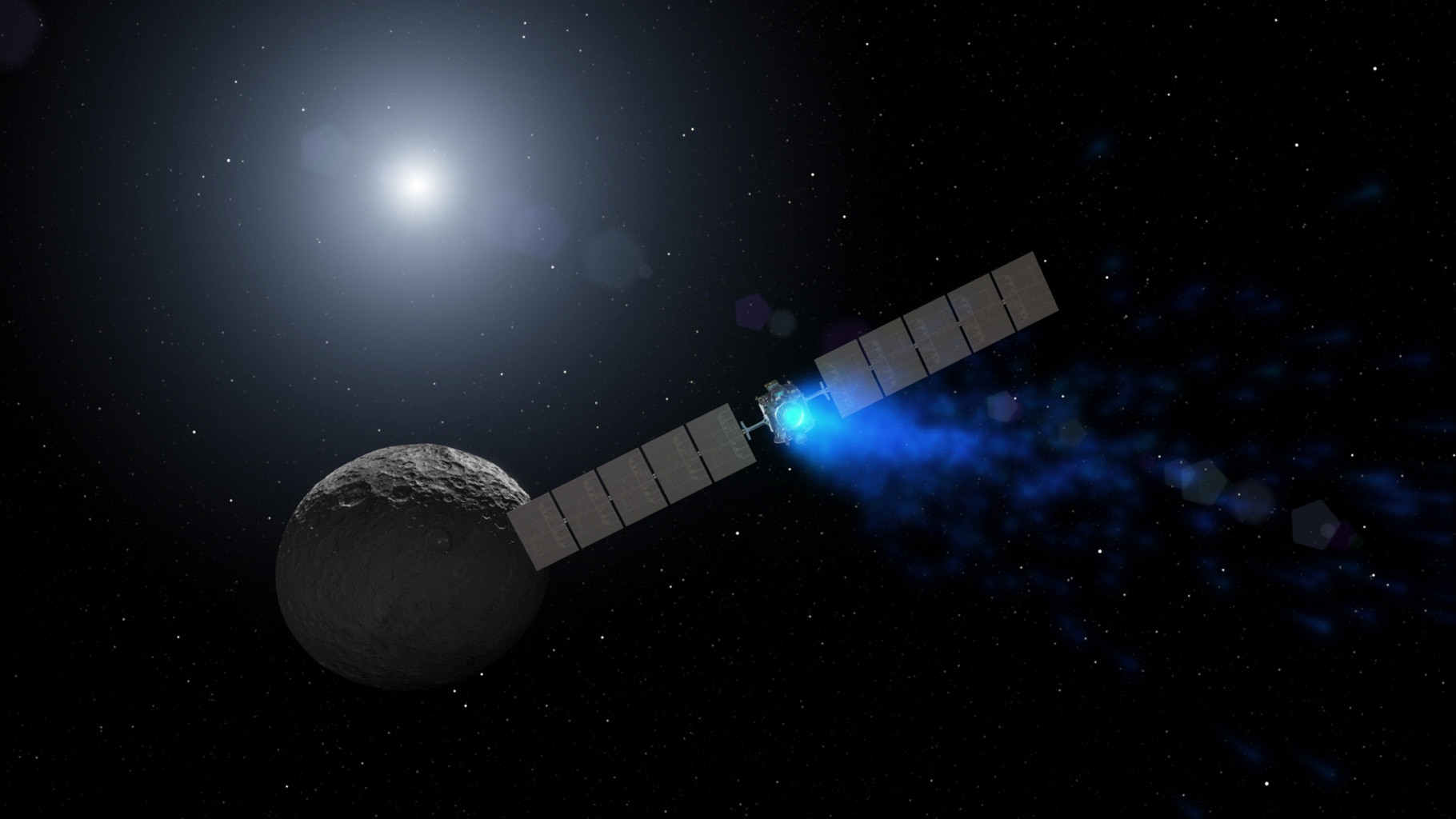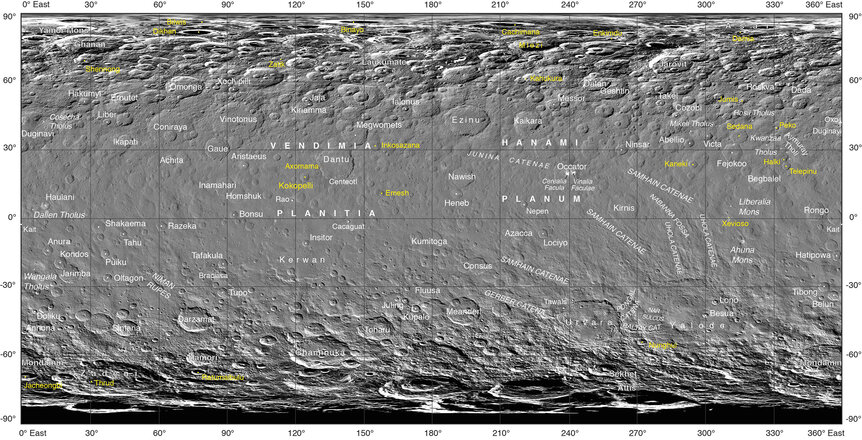Create a free profile to get unlimited access to exclusive videos, sweepstakes, and more!
Ceres harvests a series of names

I remember a time when objects in the solar system were things an astronomer studied because they were far away.
But then something remarkable happened: We built spaceships. Distant points of light became places, things we could visit. And then as we sent more and more sophisticated equipment to them, they became worlds. Diverse, complex, endlessly surprising. Places planetary scientists, and not just astronomers, could study. Places we could discover, places we could explore, places we could map.
And then another remarkable thing happened: We had to names the features on those maps.
From the ground, even close-by objects like Mars are fuzzy, and a few dozen landmarks could be seen. Naming wasn’t too hard.
But then, with space probes, we could see features with incredible resolution. We went from seeing almost nothing to seeing almost everything. And with that came the naming of names.
It becomes a sort of rite of passage for a celestial body to go from something indistinct to something where we need dozens or hundreds of names for its surface features. I’m not much for arbitrary ceremony, but when this need becomes reality, so too, somehow, does the object in question. It is no longer an astronomical object, but, well, a place.
And Ceres is now in that pantheon. Over the past year or so, the International Astronomical Union — the official keeper of astronomical catalogs, names, and such — bestowed upon this object names for its surface features. 25 more such names were recently approved by the IAU, suggestions from the team running the Dawn spacecraft, which has been orbiting Ceres since March 2015. The map of Ceres is now bursting with named features:
Ceres itself, discovered on the first day of the 19th century (January 1, 1801*), was named after the Roman goddess of the harvest, and so that has been kept as a theme for its surface: Craters are named after harvest deities from different cultures, while other features (mountains, cracks, cliffs, and so on) are named after harvest festivals from around the Earth.
When I look at this map, I truly feel awe. Ceres is a protoplanet, an object smaller than a true planet but different than the rubble we call asteroids; Ceres was well on its way to becoming a planet before it stopped growing billions of years ago. It orbits the Sun in the main asteroid belt between Mars and Jupiter, never getting closer than about 250 million kilometers from Earth.
Being only 950 kilometers in diameter, that means that even in big telescopes, Ceres is small. The best Hubble could do was get a blurry image of it; this one here was taken when Ceres was closest to Earth and therefore about as large as it can appear, and you can see it’s not terribly detailed (and even then astronomers had to do some clever image processing to get it to be as resolved as it is; with this camera Ceres is normally no better than about 20 pixels wide).
You can see some features on it, like a bright spot, and some patchy regions. But that’s about it.
Then we sent the Dawn spacecraft there. It had spent a little over a year orbiting the asteroid belt’s other protoplanet, Vesta, before venturing to Ceres. And this little fuzzy light in the sky became a world, a place of rock and briny ice and surprises and rugged, fierce beauty.
A place that needed names. And now it has them. Well over a hundred … and that’s only for features down to a few kilometers across. There are thousands upon thousands of craters and other landmarks that need names too. I wonder how that will be done? Maybe — like galaxies and stars, which became too numerous to name once our telescopes got better — we’ll just use numbers, coordinates, to designate them rather than name them. That’ll almost certainly be necessary, if unromantic.
Perhaps one day, humans will live on Ceres, exploring it, mining it, making it their home. If and when they do (and I lean toward when), they’ll personalize this little world.
I wonder, too. In the history of our planet, a lot of cultures explored as conquerors, renaming places that had had names by the natives sometimes for many thousands of years (and this is the least of the explorers’ sins). In America as well as other countries, this sort of brutality is finally being widely recognized for what it is, and efforts are being made to do better.
When we go to these other worlds, there won’t be natives there to disenfranchise or enslave, no names to erase and rewrite. But now, as we do map these worlds, the names given recognize cultures from around our own blue-green world. I think that’s a step in the right direction, and one I hope future explorers build upon.
*Yes, it was. Fight me.




























